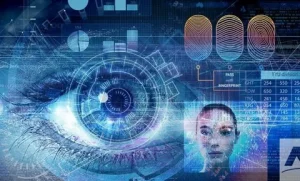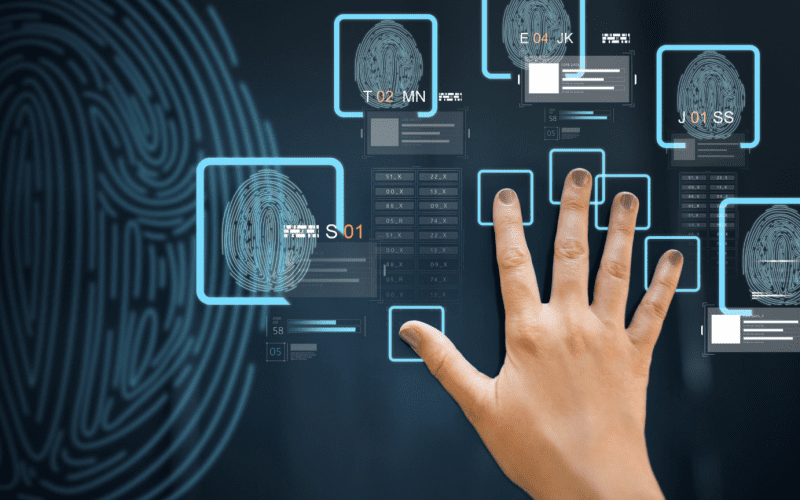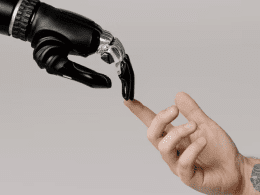Biometric Security which uses unique biological characteristics to verify an individual’s identity, is becoming increasingly integral to our digital world. From unlocking smartphones to securing sensitive data and facilities, biometrics offers a sophisticated, user-friendly alternative to traditional passwords and PINs. This article explores the future of biometric security, examining the advancements, applications, and challenges that lie ahead.
Biometric security systems use physical or behavioral characteristics such as fingerprints, facial recognition, iris scans, voice recognition, and even gait analysis to authenticate individuals. These systems are gaining traction due to their ability to provide robust security while offering convenience to users. As cyber threats continue to evolve, the need for more secure and efficient authentication methods is driving the rapid development and adoption of biometric technologies.
Advancements in Biometric Security

Multi-Modal Biometrics
Multi-modal biometric systems combine two or more biometric verification methods to enhance security and accuracy. For example, a system might use both facial recognition and fingerprint scanning to authenticate a user. This approach reduces the likelihood of false positives and negatives, making it harder for unauthorized users to gain access.
Artificial Intelligence and Machine Learning
The integration of AI and machine learning in biometric systems has significantly improved their accuracy and efficiency. AI algorithms can analyze and learn from vast amounts of data to improve recognition rates and adapt to changes in an individual’s biometric traits over time. For instance, facial recognition systems can now accurately identify individuals even with changes in appearance, such as aging or wearing glasses.
Behavioral Biometrics
Beyond physical traits, behavioral biometrics analyze patterns in behavior, such as typing speed, mouse movements, and touchscreen interactions. These systems offer continuous authentication, monitoring users’ behavior throughout their interaction with a device or system to detect anomalies that might indicate fraudulent activity.
Wearable Biometric Devices
Wearable technology, such as smartwatches and fitness trackers, increasingly incorporates biometric sensors. These devices can monitor heart rate, ECG, and other physiological signals to provide continuous biometric authentication, enhancing security for mobile and remote users.
Biometric Encryption
Biometric encryption integrates biometric data with cryptographic techniques to protect biometric templates. This approach ensures that biometric data is stored and transmitted securely, reducing the risk of data breaches and identity theft.
Smartphones and Consumer Electronics
Biometric authentication is ubiquitous in smartphones and other consumer devices. Fingerprint sensors, facial recognition, and voice recognition are commonly used to unlock devices, authorize payments, and access secure applications.
Banking and Financial Services
The financial sector leverages biometric security to enhance the protection of sensitive information and transactions. Banks use fingerprint and facial recognition to authenticate customers during online and mobile banking, while some ATMs are equipped with iris scanners for secure access.
Healthcare

In healthcare, biometrics are used to secure patient records, authenticate medical professionals, and control access to restricted areas. This ensures the privacy and security of sensitive health information while improving the efficiency of healthcare services.
Government and Law Enforcement
Governments use biometrics for various purposes, including border control, national ID programs, and law enforcement. Biometric passports and e-visas streamline travel processes, while facial recognition systems aid in the identification of criminals and missing persons.
Corporate Security
Businesses implement biometric security to control access to facilities, secure sensitive data, and authenticate employees. Biometric systems replace traditional access cards and passwords, reducing the risk of unauthorized access and insider threats.
Challenges and Concerns
Privacy Issues
The collection and storage of biometric data raise significant privacy concerns. Unlike passwords, biometric data cannot be changed if compromised. There is a risk of misuse by malicious actors or unauthorized surveillance by governments and organizations.
Security Risks
While biometric systems offer enhanced security, they are not immune to attacks. Techniques such as spoofing (using fake biometric samples) and replay attacks (using intercepted biometric data) pose significant challenges. Ensuring the security of biometric systems against such threats is critical.
False Positives and Negatives
Biometric systems are not perfect and can produce false positives (incorrectly granting access) and false negatives (denying access to legitimate users). These errors can impact the user experience and security of the system.
Ethical and Legal Concerns
The use of biometrics raises ethical and legal questions, particularly concerning consent, data ownership, and the potential for discrimination. Regulations and standards are needed to address these issues and ensure the responsible use of biometric technology.
Integration and Compatibility
Integrating biometric systems with existing infrastructure can be challenging. Compatibility issues, high implementation costs, and the need for ongoing maintenance and updates are significant hurdles for organizations adopting biometric security.
Future Trends in Biometric Security
Advancements in AI and Machine Learning
Continued advancements in AI and machine learning will enhance the accuracy, efficiency, and adaptability of biometric systems. These technologies will enable more sophisticated recognition capabilities and improve the system’s ability to detect and respond to security threats.
Integration with IoT
The Internet of Things (IoT) will drive the adoption of biometric security in various applications, from smart homes to connected vehicles. Biometric systems will provide seamless and secure authentication for a wide range of IoT devices and services.
Biometric Payment Systems
Biometric authentication will become more prevalent in payment systems, offering a secure and convenient alternative to traditional payment methods. Fingerprint, facial, and voice recognition will be used to authorize transactions, reducing fraud and enhancing the user experience.
Blockchain and Biometrics
Integrating blockchain technology with biometrics can enhance the security and privacy of biometric data. Blockchain’s decentralized nature ensures that biometric data is securely stored and verified, reducing the risk of data breaches and tampering.
Personalized Security Solutions
Biometric systems will offer more personalized security solutions, adapting to individual users’ needs and preferences. This approach will enhance the user experience while providing robust security tailored to specific use cases.
Competitive Analysis Table
| Company | Biometric Technology | Key Benefits | Challenges |
| Apple | Face ID, Touch ID | Enhanced security, user convenience | High implementation costs, privacy concerns |
| Samsung | Iris Scanner, Facial Recognition, Fingerprint Scanner | Versatile authentication options, high accuracy | Integration with older devices, privacy issues |
| Microsoft | Windows Hello (Facial Recognition, Fingerprint Scanner) | Seamless integration with Windows OS | Compatibility with third-party hardware, privacy concerns |
| Face Unlock, Voice Match | Fast and convenient authentication | Accuracy issues, security concerns | |
| NEC Corporation | Facial Recognition, Iris Recognition | High accuracy, extensive use in government and law enforcement | High implementation costs, ethical concerns |
Strategic Analysis Table
| Strategy | Description | Benefits | Challenges |
| Multi-Modal Biometrics | Combining multiple biometric methods for enhanced security and accuracy | Reduced false positives and negatives, enhanced security | High implementation costs, complexity |
| AI and Machine Learning Integration | Utilizing AI to improve biometric recognition accuracy and efficiency | Enhanced adaptability, improved recognition rates | Data quality, AI bias issues |
| Behavioral Biometrics | Analyzing user behavior for continuous authentication | Continuous security, reduced fraud risk | Privacy concerns, behavioral data complexity |
| Wearable Biometric Devices | Incorporating biometric sensors in wearable technology for continuous authentication | Enhanced mobility, continuous monitoring | Device compatibility, sensor accuracy |
| Biometric Encryption | Integrating biometric data with cryptographic techniques for secure storage and transmission | Enhanced data security, reduced risk of breaches | Technological complexity, regulatory compliance |
Biometric security is set to revolutionize the way we verify identities and secure our digital world. By addressing the challenges and leveraging the advancements in AI, machine learning, and biometric technologies, we can create a more secure, efficient, and user-friendly future.
Conclusion
Biometric security is poised to become a cornerstone of digital identity verification and access control. The advancements in AI, machine learning, and biometric technologies are driving the adoption of more secure, efficient, and user-friendly authentication methods. However, addressing the privacy, security, and ethical challenges associated with biometric systems is crucial to ensuring their responsible and widespread use. As the technology continues to evolve, biometric security will play an increasingly vital role in protecting our digital lives.












